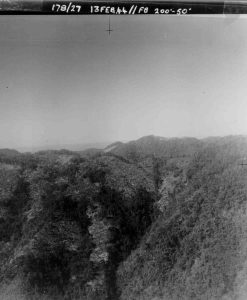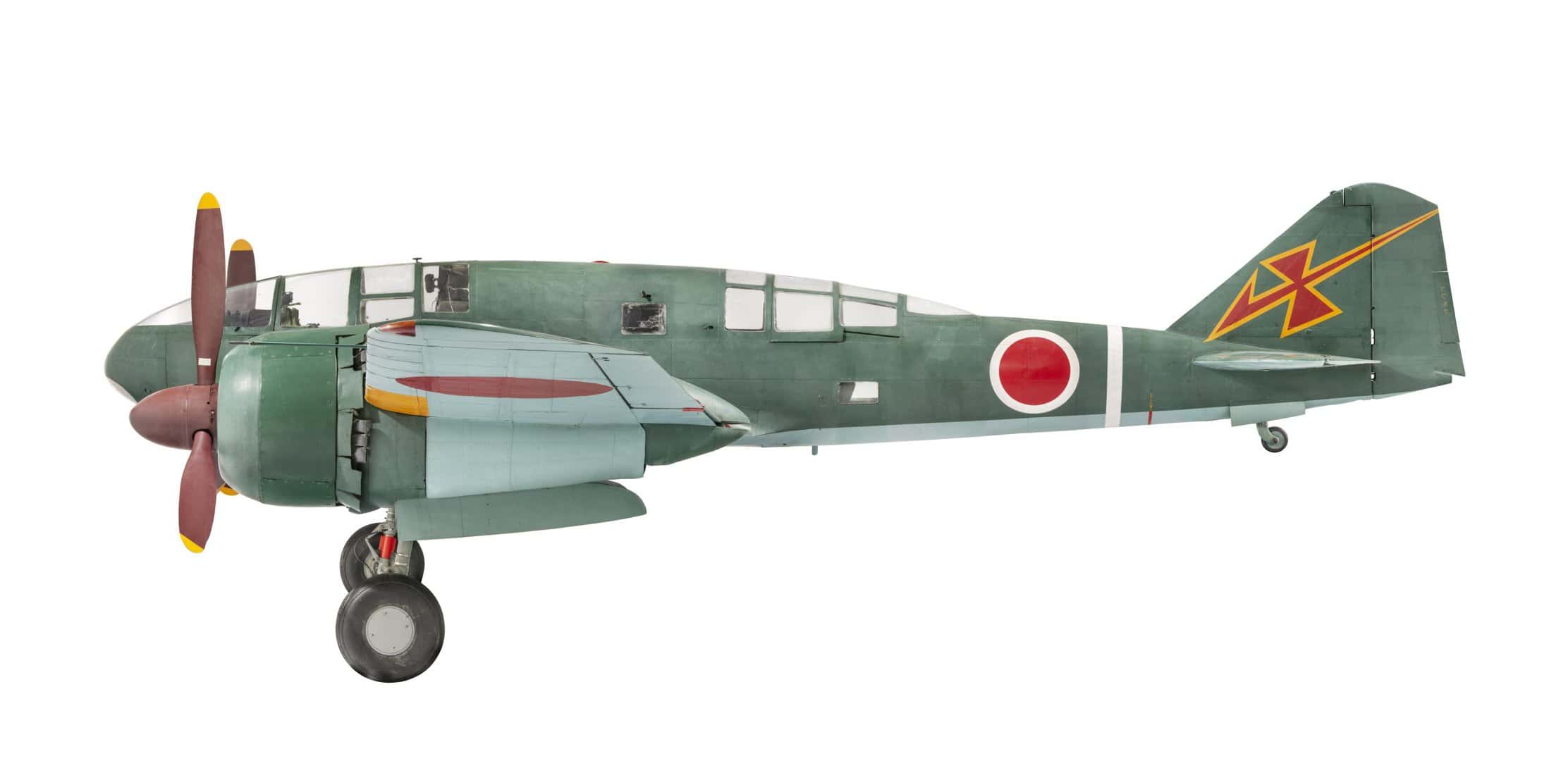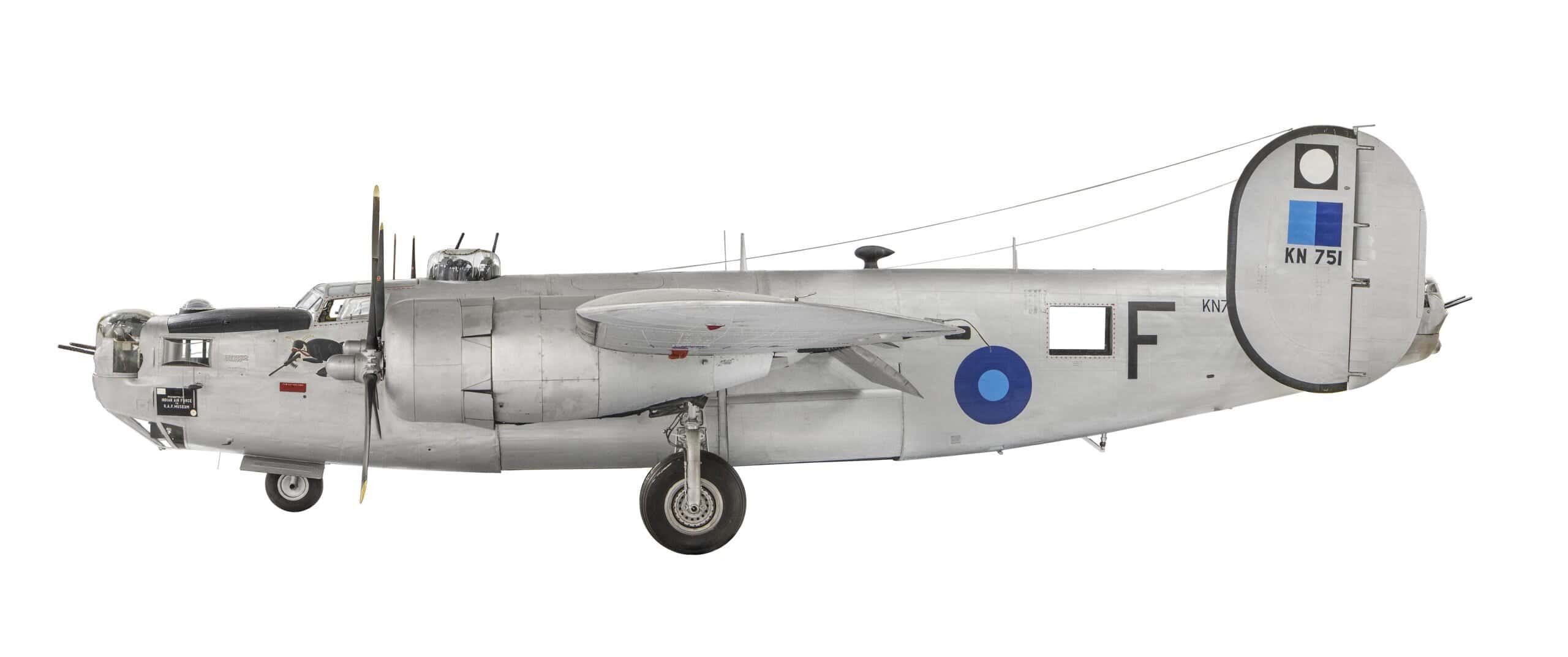South East Asia was a unique theatre. Air Commodore Henry Probert described how RAF operations:
‘took place over mountain and jungle terrain, in weather conditions that knew no parallel elsewhere … with few of the aids to navigation that were taken for granted in Europe, and at times over distances that were by the standards of those days. [They were] made possible by a great team of men working on the ground in conditions of heat, rain, disease and natural hazards that few had ever experienced before…’
 Jungle-covered mountains in Burma photographed by No. 27 Squadron, 13 February 1944, RAF Museum PC71/19/1496/1
Jungle-covered mountains in Burma photographed by No. 27 Squadron, 13 February 1944, RAF Museum PC71/19/1496/1
A number of aircraft held by the RAF Museum operated in South East Asia during the Second World War.
An example is the Mitsubishi Ki-46 ‘Dinah’.

Mitsubishi Ki-46 ‘Dinah’ RAF Museum/Iain Duncan 1989/0307/A
Either very lightly – or in some cases, completely – unarmed, the ‘Dinah’ was designed to fly so high and so fast that it was out of danger while it took photographs of allied positions. With its thin wing, narrow and streamlined fuselage and fully retractable main and tail wheels, it was designed to rip through the air. And in the early stages of the Asia-Pacific war, the allies had nothing which could catch it. The RAF Museum’s Ki-46 was captured by the British in Malaya at the end of the War. It was assessed by the Allied Technical Air Intelligence Unit, South East Asia (ATAIU SEA), before coming to the UK as a museum object.

Consolidated B-24 B Mk VIII Liberator RAF Museum/Iain Duncan 74/A/790
The four engine long range Consolidated Liberator bomber was the most produced American combat aircraft of the Second World War. In South East Asia it enabled the RAF to establish a strategic bomber force which could attack Japanese targets throughout the region. Liberators were used in a bombing campaign against the transport network in Burma and Indochina as well as in an anti-shipping role, and for supply dropping to special forces on the ground. The RAF Museum’s Liberator supported guerillas fighting the Japanese in Malaya and provided aid to internees and prisoners of war in the final stages of the war.
